We love simple STEM activities for kids that you can do at home. One summer, we completed 31 STEM activities for kids all in the same month! One of my favorite easy is learning how to turn a penny green and what variables can change how fast or quickly the copper turns green. We love this experiment when we need fun no prep STEM challenges!
I love science experiments for kids that are easy but have impressive results like this green pennies experiment, plus kids get to learn why pennies turn green at the same time!
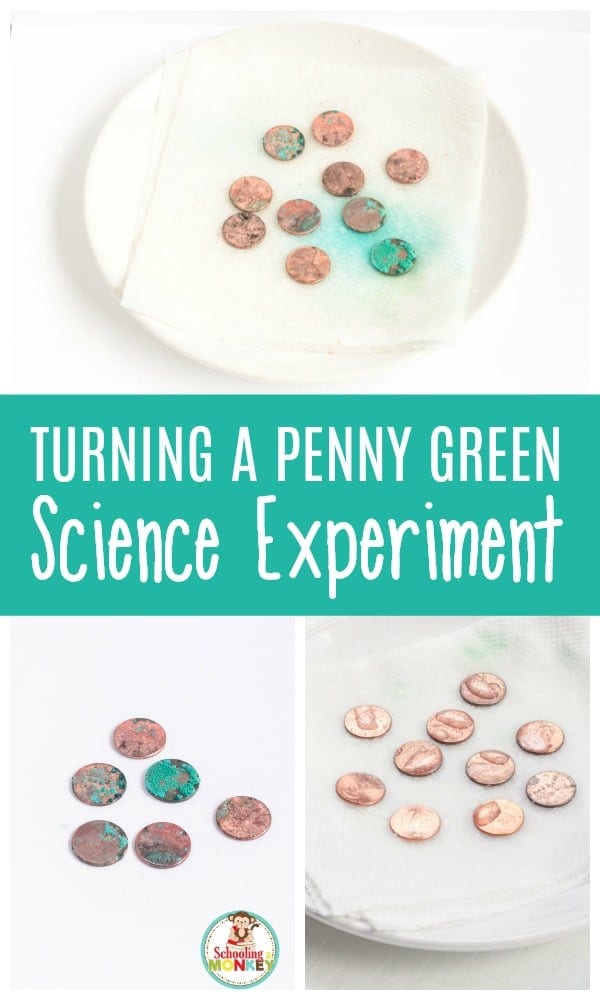
How to Do the Green Penny Experiment
Follow along with these directions to learn how to turn pennies green and why pennies turn green! This project is also great for elementary school science fair projects.
Why Do Pennies Turn Green?
The reason pennies turn green is the same reason why the Statue of Liberty is green!
We’ve all seen the statue of liberty, and she is quite green these days. But originally, she was bright orange and a shiny copper!
The green stuff covering the Statue of Liberty is called malachite, and it is a result of copper being exposed to salt, acid, and weather.
You can recreate Liberty’s transformation from copper to green with pennies. Read on to learn how to turn a penny green.
Is a Penny Turning Green a Chemical Change?
Yes, pennies turning green is a representation of a chemical change. You can learn what is a chemical reaction for kids to complete your chemistry lesson plan.
Pennies are largely made of copper, which means they oxidize just like many other metals.
However, rather than rusting, pennies simply get covered in a coating of green that can be polished off. Turning a penny green does not eat holes into the penny.
When you add vinegar and salt to pennies, it dissolves the top copper-oxide layer of the penny. This causes the copper atoms to mix with oxygen in the air and chlorine in the salt.
This creates a blue-green substance known as malachite. It’s chemistry in action!
However… our penny experiment actually took much longer than we expected! Our hypothesis was that since pennies have a bit less copper now, perhaps that is why they took longer to react.
The other hypothesis was that it was user error.
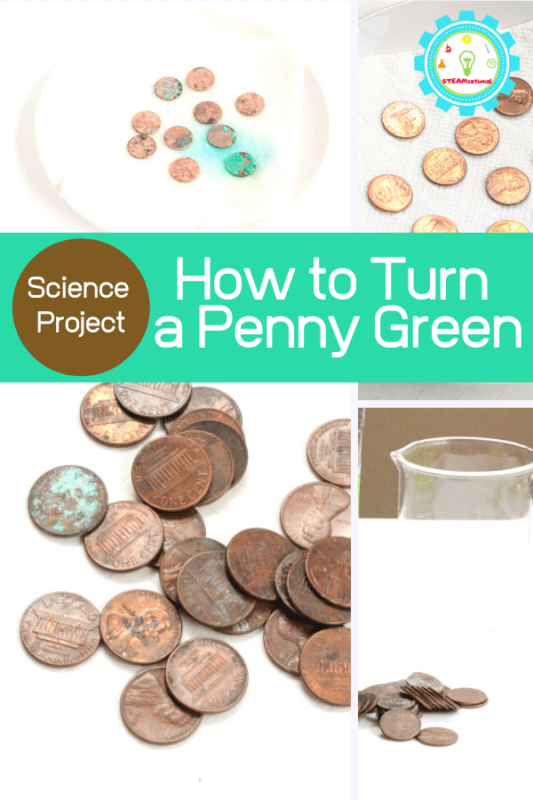
This experiment is one of our favorite classic science fair projects.
Penny Science Experiment Video
Watch this video to see how turning a penny green works!
How to Turn the Penny Experiment into a Science Fair Project
If you want to bring this easy experiment to an elementary science fair, you have to have a question and you have to have variables to test and record!
Here are some questions that can be answered by this experiment:
- Is oxygen required for pennies to turn green?
- Will other materials besides salt turn pennies green?
- Can you make pennies turn green faster?
- Can you reverse the oxidation of the copper?
- Does the amount of acid matter in turning pennies green?
- Is there a way to prevent pennies from turning green?
Supplies for the Oxidized Pennies Science Fair Project
This post contains affiliate links. When you buy through one of my links, I make a small commission.
- 2Salt
- Vinegar
- Shallow tray
- Paper towels
- Pennies
What You Need for a Science Fair
You’ll want to have these supplies on hand before doing your science fair project. Shop the included Amazon storefronts to make things easier and don’t forget to download the free science fair planning checklist before getting started!
Science Fair Project Planning
When you’re planning your project, you want to keep everything organized. Click the image below to get my free science fair project checklist so you can start organizing your project from the start.
You may also want to check out this list of science fair project research supplies.
Supplies for a Science Fair Project
There are so many supplies for science fair projects that are individual to each project, but if you want a general list of possible supplies and inspiration for your project, check out my selection of science fair experiment supplies on Amazon.
Supplies for a Science Fair Presentation
Your science fair presentation is important! It should look presentable and eye-catching. Check out this list of my favorite science fair presentation supplies.
How Long Does it Take for a Penny To Turn Green?
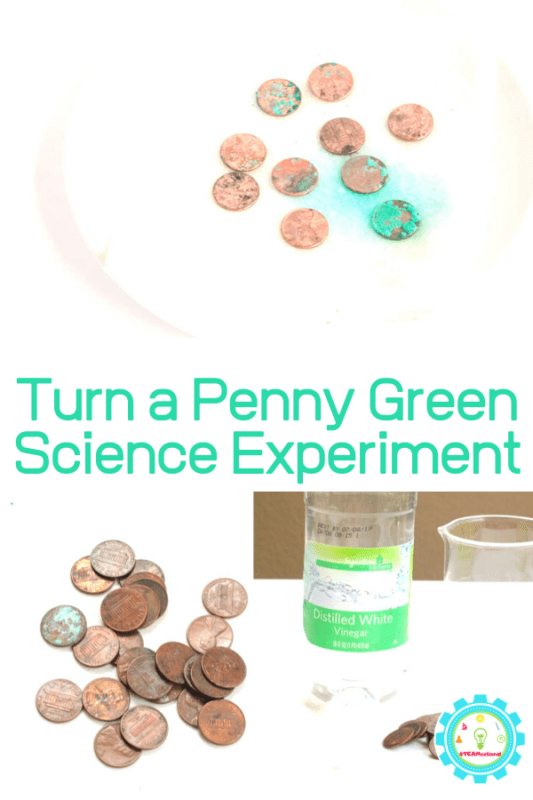
In the wild, so to speak, pennies turn green with exposure to oxygen and an acid (which can be from fingers, food, the weather, and a bunch of other stuff).
But in this controlled environment, you can speed up the process using salt, vinegar, and some air.
Allow the pennies to sit until they start to turn green.
This could take as little as 24 hours, but in our case, it took over 2 weeks.
However, we did have the pennies soaking in a deep solution at first. When we changed it out for a vinegar-soaked paper towel, the pennies turned green the next day.
I think our original set-up didn’t get enough oxygen, which is essential for turning a penny green.
How to Oxidize a Penny Quickly
If you want to oxidize a penny quickly, you have to introduce air in addition to the salt and vinegar reaction.
If the pennies are too wet, the reaction will take longer. Because this is an oxidation experiment, you need a key ingredient-oxygen!
Spread out your pennies on a paper towel liberally sprinkled with salt and just dampened with vinegar and your pennies will oxidize much faster.
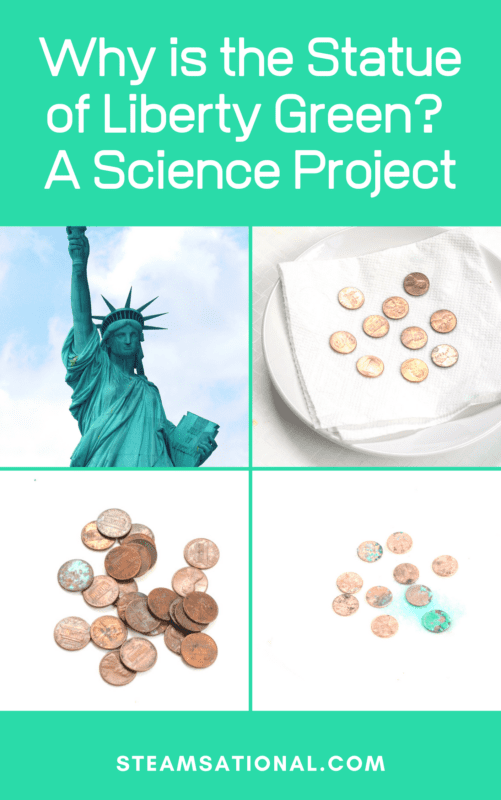
How to Do the Green Pennies Experiment
Soak a paper towel in vinegar and line the bottom of your tray.
Place the pennies onto the paper towel. Sprinkle the pennies with salt.
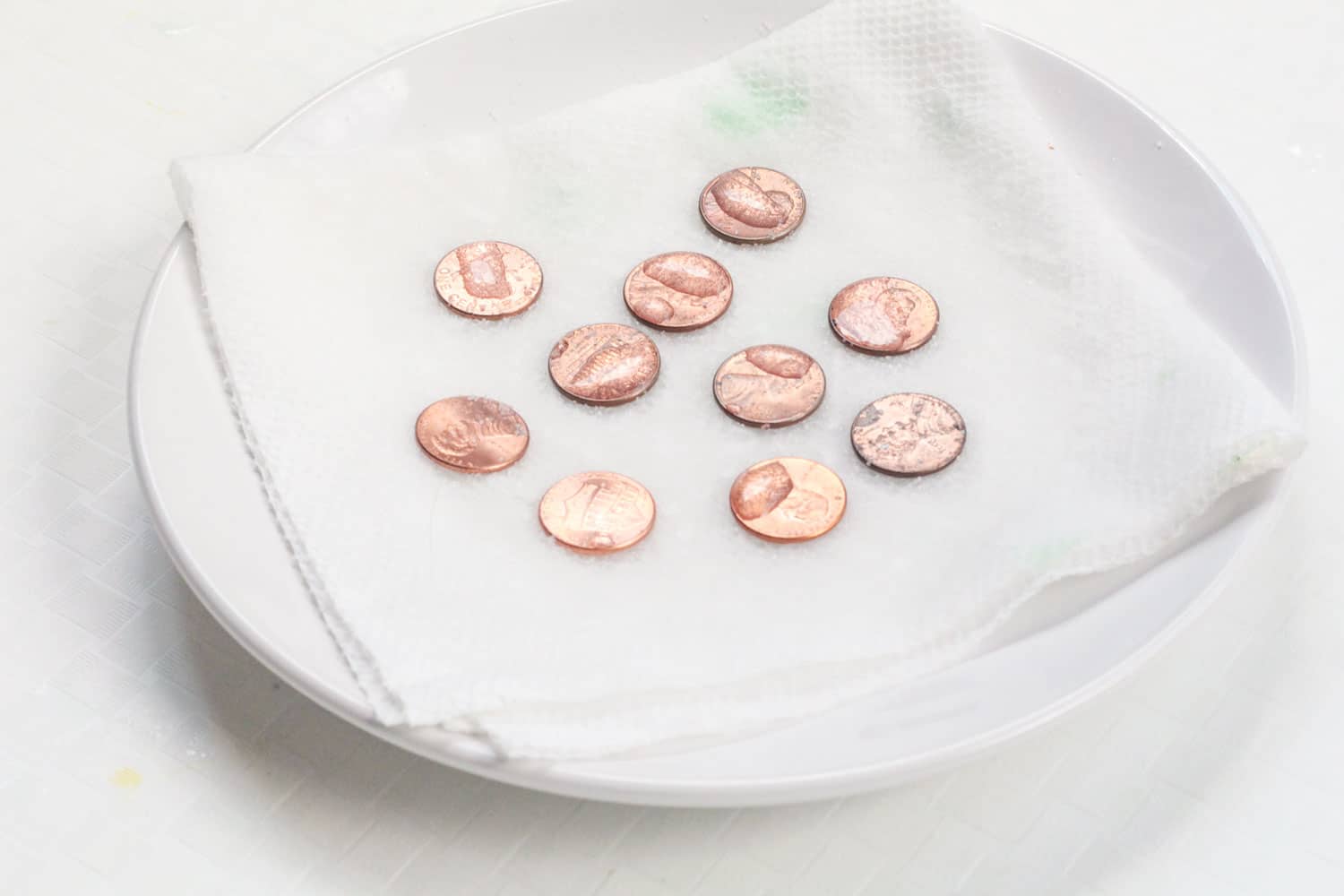
Wait for the reaction to start. If your paper towel isn’t too wet, it will start to oxidize and your pennies will start to turn white and then green within about 10 to 30 minutes.
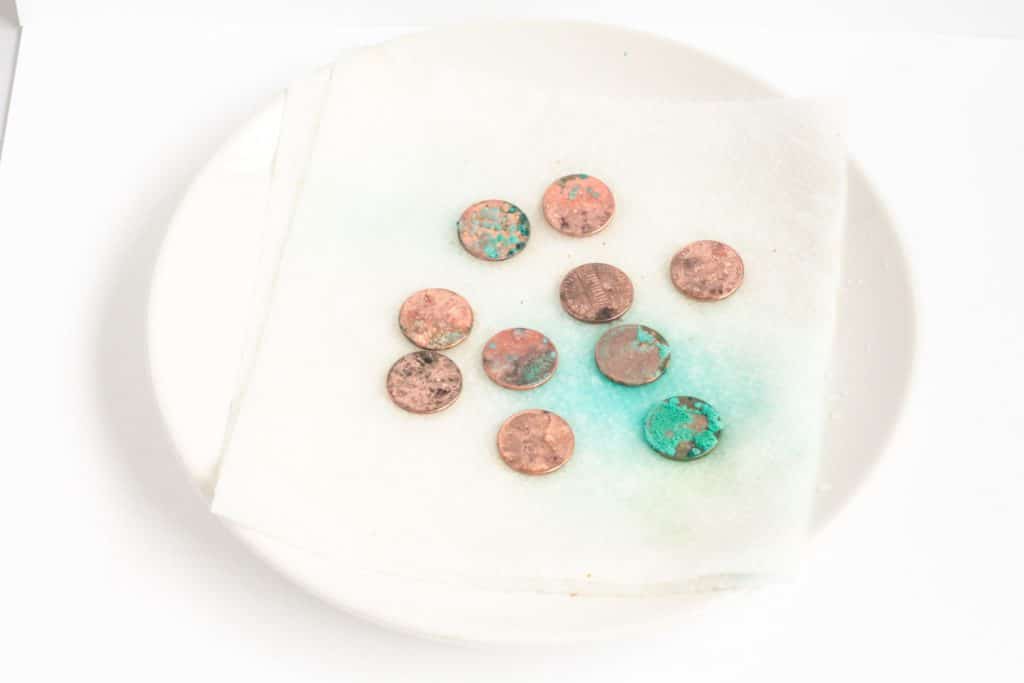
The next day, your pennies will be covered in green! The oxidation experiment is complete and you have turned your pennies green!
More Chemistry Experiments for Kids
DIY Real Pokeball: Chemical Reaction Science Activity for Kids
Soap Making Science Project-Saponification at Work!

